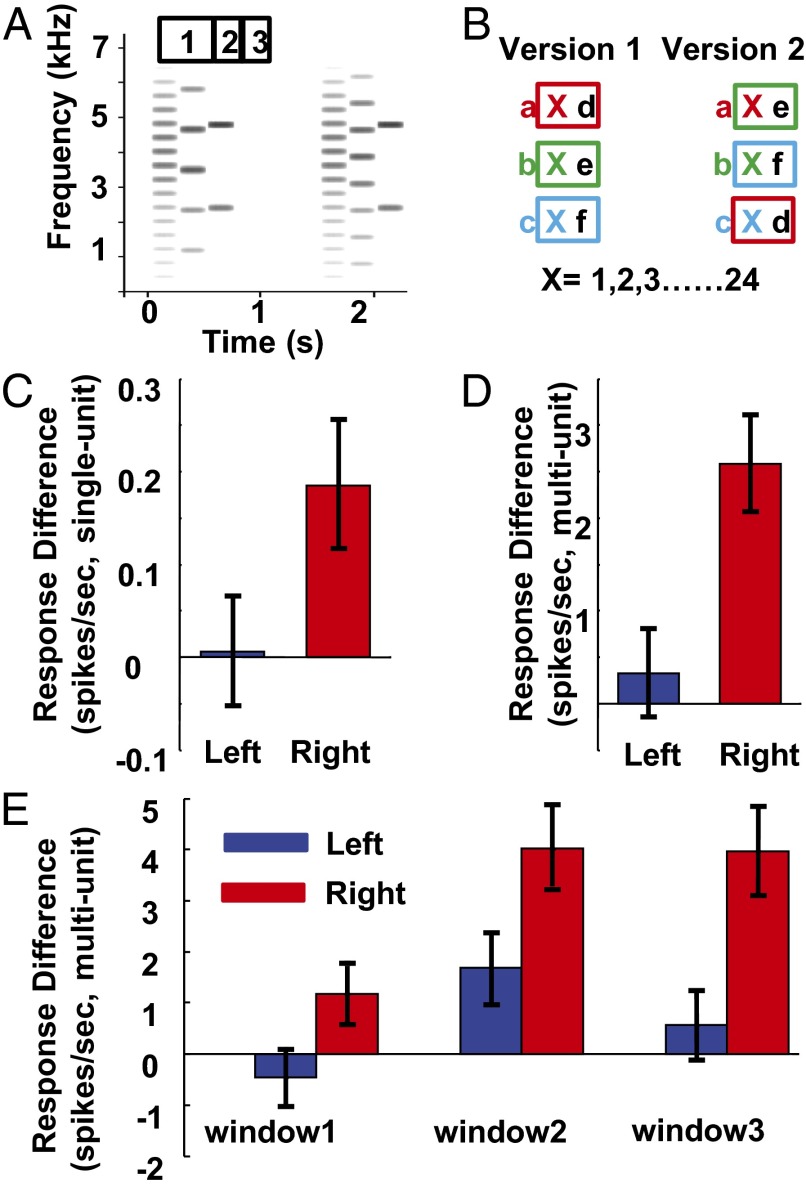Fig. 3.
Nonadjacent stimuli and neural responses in experiment 5. (A) Example of triplet stimuli. Triplets are made from syllables like those in Fig. 1 B and C. The two triplets shown share the same first and last syllable, but the middle syllable is variable. Numbered bars above the first triplet show the timing of three response windows (see text and E). (B) Structure of the stimulus set. One version of triplets was heard during passive exposure, and both versions were played in the testing phase. The two versions share the same sounds in different combinations. Letters with same color indicate triplets that share the first and second syllable. Boxes with same color indicate triplets that share the second and third syllable. (C) Differences in single-unit responses between novel and familiar triplets were significant only in the right hemisphere. (D) Differences in multiunit responses between novel and familiar triplets in each hemisphere were only significant in the right hemisphere. (E) Differences in responses between novel and familiar triplets in the three response windows. No significant difference was found in window 1 for either hemisphere. Significant differences were found in window 2 for both hemispheres. In window 3, significant differences were seen only in the right hemisphere. Error bars show ± SEM.

